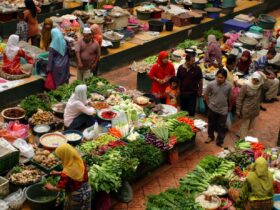Planting System and Sustainable Agriculture
Planting system
Cropping methods allow for crop management that makes the most of available climatic and soil resources. As a result, the environmental conditions of a region have a big impact on the agricultural systems that farmers adopt. What farmers cultivate is also influenced by socioeconomic and political variables. Tillage of the soil is an important aspect of agricultural production techniques. The following are some cultural practices that have been created expressly to improve the effectiveness of conservation tillage:
- Agroforestry and Alley cropping
Agroforestry is a method of cultivating annual food crops alongside woody perennials in order to maximize the use of natural resources, reduce the need for non-renewable resource inputs, and lessen the danger of environmental damage, such as erosion. Annual crops are grown between adjacent hedgerows of leguminous shrubs and woody perennials in alley cropping, a type of agroforestry. In the case of land deterioration, the system is appropriate.
- Cover cropping
Diversifying an agricultural system improves its stability and decreases disease and insect infestations. In an agricultural system, it is important to grow grass or leguminous cover crops at regular intervals (once every 2-3 years in the tropics). The fundamental benefit of cover crops is that they conserve soil tillage methods. They improve fertility, weed management, rainwater conservation, and energy efficiency. They also aid in the improvement of soil physical qualities, such as soil tilth, and the reduction of soil erosion.
- Live Mulch
Mixed cropping is a type of live mulch. A fast-growing perennial legume is planted to smother or control weeds, and a seasonal grain crop is grown through it in such a way that the food crop’s growth and yield are not adversely affected.
- Crop Rotations and Multiple Cropping
Crop rotation is a planned succession of various crops cultivated on the same land over a period of years. Crop rotations vary in length and crop species diversity. With synthetic fertilizer and pesticide inputs, the trend toward simplified crop rotations is conceivable. Corn-soybean rotation is a nice example of crop rotation (2-year rotation). Soybean is a legume that helps with nitrogen fixation biologically. Crop rotations have a number of benefits, including weed control, disease, and pest control, rotation impacts, and risk reduction. Soil erosion is reduced and soil quality is improved when perennial legumes like alfalfa are included in the rotation.
- Summer fallowing
Summer fallow, also known as fallow cropland, is cropland that is intentionally left uncultivated during the growing season. By resting the ground in this way, one crop can be grown with moisture and nutrients from multiple crop cycles. Summer fallow is intimately related to dryland farming because it offers enough extra moisture and nutrients to allow the development of crops that would otherwise be impossible. This is usually done in semi-arid regions to save moisture for the next season. It also gives crop residues more time to break down and provide nutrients to the soil for the following crop.
- Succession Planting
This is when you sow or plant a crop a little at a time to provide a steady supply of veggies throughout the harvesting season, avoiding lean and glut periods.
- Interplanting or Intercropping
This is the technique of planting multiple crops in a block, row, or place at the same time. It makes use of all of the garden’s available space at all times.
- Catch cropping
This is a small, fast-maturing crop that can be grown alongside or in addition to larger, slower-maturing crops. It’s a feature of interplanting. Lettuce, dwarf bean, cress, mustard, chives, celeriac, radish, turnip, corn salad, and early carrots are some of the best vegetables for catch-cropping.
Sustainable agriculture is defined by the United Nations’ Food and Agricultural Organization as the use of agricultural practices that save water and soil while also being ecologically friendly, technically suitable, economically viable, and socially acceptable.
Environmental health, economic profitability, and social and economic equality are the three fundamental objectives of sustainable agriculture. The notion of sustainability states that we must meet current needs without jeopardizing future generations’ ability to meet their own.
Sustainable agriculture aims to create an economically successful food and fiber production system while also conserving or improving environmental quality and consumer and farmer well-being. Farmers and other agricultural professionals labor to promote innovative farming techniques, as well as strong local economies and marketplaces, while also safeguarding natural resources including soil and water quality, as well as wildlife habitat.
Sustainable agriculture attempts to make the best use of energy-related inputs possible. Enhanced cultivars, innovative crops, efficient cropping systems, improved tools, increased fertilizer use efficiency, and integrated pest management systems are all part of the strategy. Agriculture that is environmentally, economically, and socially sustainable must be compatible.
You may read: Organic Agriculture Introduction – Agribusiness Education and Research International
You may read: What is Sustainable Agriculture? – Agribusiness Education and Research International
What is Permaculture? – Agribusiness Education and Research International
Join our LinkedIn group
https://www.linkedin.com/groups/13943442/
Join our Facebook group
https://www.facebook.com/groups/agribusinesseducationandresearchinternational






Leave a Reply